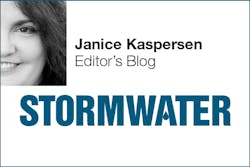
There are few things as frustrating as following the instructions, doing what you’re supposed to do, and then learning that your efforts were seemingly for nothing. At some point you might have received that dreaded evacuation notice because of a storm—and, ideally, you got out of the way if you did—perhaps only to find that the tornado or hurricane or flooding didn’t occur where or when it was expected to. It’s those sorts of false alarms, officials say, that make many people reluctant to heed the notices in the first place, putting themselves—and ultimately the people who have to go in and rescue them—at risk.
This year, on the 25th anniversary of Hurricane Andrew, the National Weather Service and National Hurricane Center will roll out some changes to the way storm watches and warnings are issued. This applies particularly to tropical storms and hurricanes in the Atlantic and the Gulf of Mexico, but also to places farther inland.
As I mentioned last week, an article coming up in the September issue of Stormwater will examine the process of predicting and monitoring hurricanes. Many people associate hurricanes with high winds, but the former director of the National Hurricane Center, interviewed in the article, says that much of the damage and 90% of hurricane-related deaths are caused by water: flooding, storm surge, and high surf. “We need people to be more afraid of water,” he says.
As the article—by long-time Forester writer Carol Brzozowski, a Florida resident who’s no stranger to hurricanes herself—explains, new storm surge watches will be issued 48 hours, and warnings 36 hours, ahead of a predicted surge. Storm surge flooding maps will indicate how far inland, and how high, the water might reach. These will occur in addition to the traditional hurricane watches and warnings associated with high winds. “As a decision-maker, if you don’t want to tolerate much risk, you might want to use the earliest reasonable time to make sure all of your preparations are done,” notes a hurricane specialist with the National Hurricane Center.
The article will also introduce the people who fly into the storms—hurricane hunters—to collect real-time data. The same NOAA aircraft used for this job during the summer hurricane season fly over the continental US during the winter. Their gamma radiation detectors can determine how much water is contained in snowpack and how likely it is to cause flooding when it melts, leading to similar inland flood warnings.
Here’s a quick question: How important have storm warning systems—coastal or inland—been in your own work? Would having information available days or hours earlier significantly change the way you prepare a site?
About the Author
Janice Kaspersen
Janice Kaspersen is the former editor of Erosion Control and Stormwater magazines.